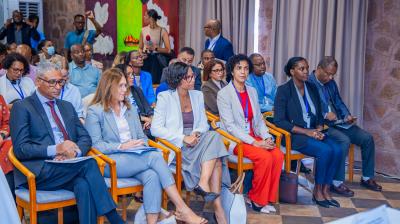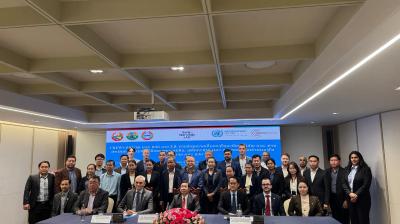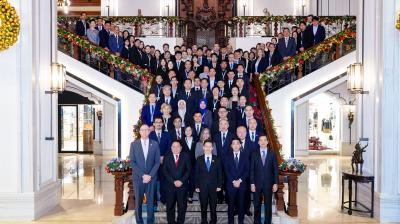Empowering Pacific Island countries to advance their hydrological and water resources capacities
In a significant stride towards enhancing disaster preparedness and resilience in the Pacific, a pivotal workshop was held in Nadi, Fiji, aimed at initiating the Pacific Early Warning Systems for Flood and Flash Flood Guidance System projects. This workshop brought together representatives of National Meteorological and Hydrological Services (NMHSs) and National Disaster Management Offices (NDMOs) from six countries—Fiji, Kiribati, Samoa, Solomon Islands, Tonga, and Vanuatu—with the collective goal of establishing a robust, regional approach to managing and mitigating flood-related risks. The two projects are being supported by the United States Agency for International Development through its Bureau for Humanitarian Assistance (USAID/BHA).
Floods including flash floods are recurrent threats in the Pacific region, often leading to significant loss of life and property. The workshop provided a platform for sharing knowledge and challenges in the Pacific for early warning systems. Experts in hydrology, meteorology, and disaster risk management engaged in discussions and breakout sessions, focusing on the development and implementation of the two projects tailored to the unique climatic and geographical conditions of the Pacific islands.
The initiative aims to enhance the capacity of national meteorological and hydrological services in these countries, enabling them to provide timely and accurate flood forecasts and warnings. By improving these early warning systems, the project seeks to reduce the vulnerability of communities, ensuring they have the information needed to take proactive measures and safeguard lives and livelihoods.
Introducing the Pacific Islands Hydrological Outlook Forum (PIHOF)
In conjunction with the primary focus of the workshop, a dedicated half-day session was held to pilot the Pacific Islands Hydrological Outlook Forum (PIHOF). This session marked the next step in regional hydrological collaboration, following the WMO Global Hydrological Status and Outlook Systems (HydroSOS) workshop that was held in Christchurch, New Zealand last year and which led to the development of the HydroSOS implementation plan for WMO Regional Association V (WMO RA V). The PIHOF also presented the opportunity to discuss a proposed project for implementing HydroSOS in the region.
HydroSOS aims to provide comprehensive, real-time information on the current status and future outlook of water resources. During the PIHOF session, participants discussed the integration of HydroSOS into national and regional frameworks, emphasizing the benefits of having a coordinated approach to hydrological forecasting and water resource management.
The PIHOF session saw participation from the National Designated Authorities (NDAs) to the Green Climate Fund (GCF) from Fiji, Solomon Islands, and Vanuatu. Their involvement highlighted the critical need to align national strategies with international funding for climate resilience. Engaging the NDAs fostered a collaborative environment, aligning regional priorities with global finance opportunities to secure sustainable support for hydrological and flood management initiatives.
The workshop in Nadi represents a significant step forward in regional cooperation and capacity-building. By initiating the Pacific Early Warning Systems for Flood and Flash Flood Guidance and introducing the PIHOF, the participating countries have laid the groundwork for a more resilient and informed approach to managing hydrological challenges.
As these systems are developed and implemented, the Pacific region can look forward to a future where communities are better prepared to face the challenges posed by floods and other hydrological hazards. Through continued collaboration, knowledge-sharing, and strategic funding, the vision of a safer and more resilient Pacific is within reach.










